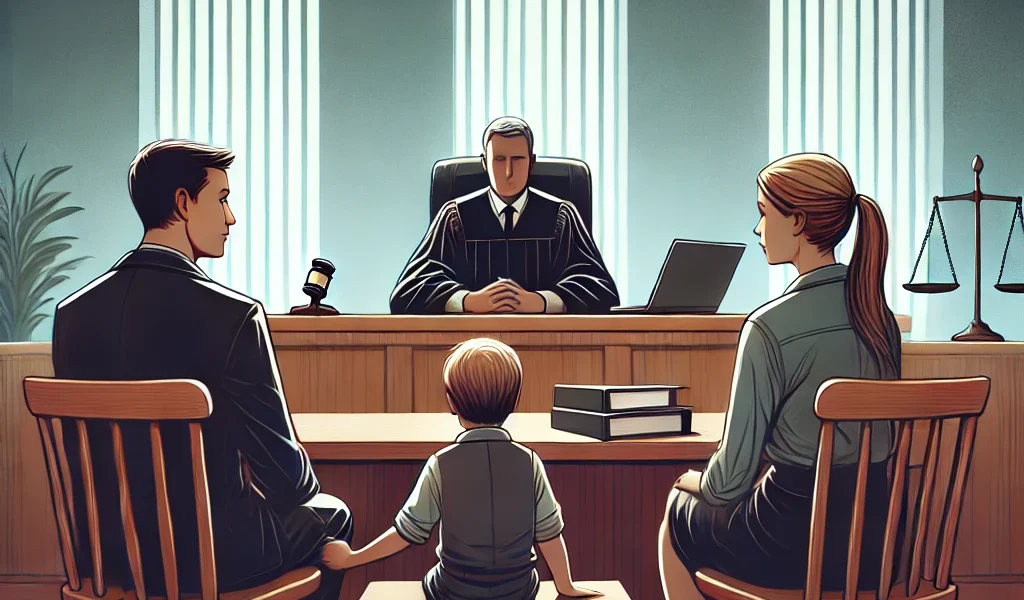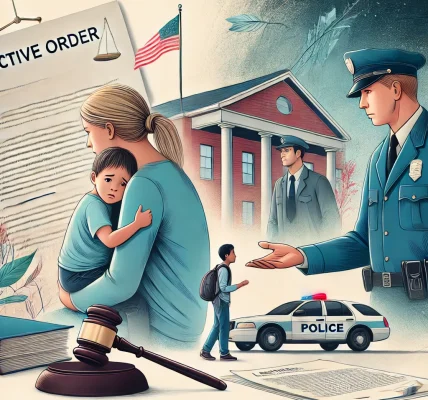Introduction
Child custody laws play a crucial role in ensuring the well-being of children during and after a separation or divorce. These laws outline the rights of both parents and children, ensuring that custody arrangements serve the child’s best interests. Understanding these laws is essential for parents navigating custody disputes while prioritizing their child’s emotional and financial stability.
This blog provides a comprehensive guide to child custody laws, explaining the different types of custody, parental rights, children’s rights, and legal processes. However, it is important to note that laws vary by jurisdiction, and seeking professional legal advice is always recommended.
What Is Child Custody?
Child custody refers to the legal rights and responsibilities parents have concerning their child’s care, upbringing, and decision-making. When parents separate or divorce, they must determine how custody will be shared or allocated.
Types of Child Custody
- Legal Custody – The right to make important decisions about the child’s education, healthcare, religion, and general welfare.
- Sole Legal Custody: Only one parent has decision-making authority.
- Joint Legal Custody: Both parents share decision-making responsibilities.
- Physical Custody – The right to have the child live with a parent.
- Sole Physical Custody: The child primarily resides with one parent, while the other parent may have visitation rights.
- Joint Physical Custody: The child spends significant time living with both parents.
- Sole Custody – One parent has full legal and physical custody, and the other parent may have limited or no contact.
- Joint Custody – Both parents share legal and/or physical custody, requiring cooperation and communication.
Factors Courts Consider in Custody Decisions
Family courts prioritize the child’s best interests when determining custody arrangements. Key factors include:
- Child’s Age and Needs: Younger children may require more stability, while older children’s preferences might be considered.
- Parental Fitness: The mental, physical, and emotional ability of each parent to care for the child.
- Child-Parent Relationship: The emotional bond between the child and each parent.
- History of Abuse or Neglect: Any past incidents of domestic violence or neglect can impact custody decisions.
- Parental Willingness to Cooperate: Courts prefer parents who encourage a healthy co-parenting relationship.
- Living Arrangements: The suitability of each parent’s home environment.
- Child’s Wishes: Depending on age and maturity, courts may consider the child’s preference.
Rights of Parents in Custody Cases
Both parents have certain rights regarding child custody, including:
- Right to Seek Custody: Either parent can request custody through legal proceedings.
- Right to Fair Consideration: Courts do not favor one parent based on gender.
- Right to Visitation: Non-custodial parents usually have rights to visit their child unless it is against the child’s best interests.
- Right to be Informed: Parents have the right to access their child’s medical and educational records.
- Right to Modify Custody Agreements: Custody arrangements can be revised if circumstances change significantly.
Rights of Children in Custody Cases
Children also have legal rights that courts prioritize when making custody decisions:
- Right to a Safe and Stable Environment
- Right to Maintain Relationships with Both Parents (if safe)
- Right to Express Their Wishes (depending on age and maturity)
- Right to Emotional and Financial Support from Both Parents
- Right to Protection from Abuse or Neglect
Legal Process of Child Custody Cases
Step 1: Filing for Custody
A parent seeking custody must file a petition in the appropriate family court. This petition outlines the custody request and reasons why it is in the child’s best interest.
Step 2: Court Evaluation & Mediation
Courts often encourage parents to resolve custody issues through mediation. If mediation fails, courts may order evaluations, where professionals assess the child’s needs and parental abilities.
Step 3: Custody Hearing
If parents cannot agree, a judge will review evidence, including witness testimonies, expert reports, and parental statements, before making a custody ruling.
Step 4: Custody Order Issuance
The judge finalizes the custody arrangement through a court order, which both parents must adhere to. Violating a custody order can lead to legal consequences.
Step 5: Modifications & Enforcement
If circumstances change, such as relocation or endangerment concerns, either parent can request a custody modification through the court.
How to Strengthen Your Custody Case
- Demonstrate Active Parenting: Show involvement in your child’s education, healthcare, and daily life.
- Maintain a Safe and Stable Home: A positive living environment strengthens your case.
- Communicate Respectfully with the Other Parent: Courts favor parents who encourage healthy co-parenting.
- Follow Court Orders and Agreements: Compliance with existing agreements demonstrates responsibility.
- Keep Documentation: Maintain records of parenting schedules, expenses, and communications related to custody matters.
Conclusion
Understanding child custody laws is crucial for ensuring that children’s best interests remain the priority. Custody decisions can be complex, but knowing your rights as a parent and the rights of your child helps you navigate the legal process more effectively. While this blog provides general guidance, it is always recommended to consult a family law attorney for personalized legal advice based on your specific situation.




